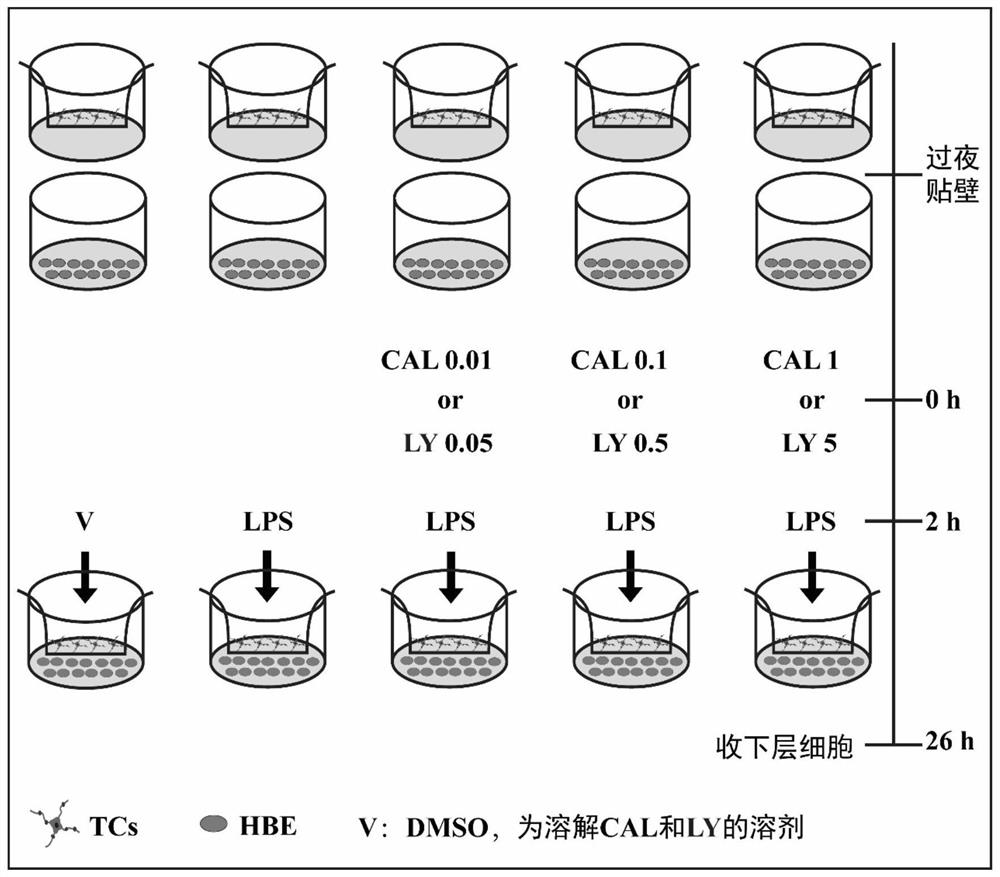Exosome of mouse lung telocyte line as well as extraction method and application of exosome
An extraction method and exosome technology, applied in the field of biomedicine, can solve the problems of increasing tumorigenicity and immunogenicity, limiting the basic research and clinical application research of special cell exosomes, and insufficient stability, and achieve good The effect of applying the foreground
- Summary
- Abstract
- Description
- Claims
- Application Information
AI Technical Summary
Problems solved by technology
Method used
Image
Examples
Embodiment 1
[0199] Extraction and identification of exosomes (TCs-exo) from mouse lung specific cell line:
[0200] 1. Extraction of exosomal TCs-exo:
[0201] (1) When culturing TCs to about 75% of the cell density, discard the complete medium containing FBS, wash 2-3 times with PBS, and add serum-free medium for 24 hours;
[0202] (2) Collect cell culture medium and centrifuge at 300 × g for 10 min;
[0203] (3) Centrifuge at 2000×g for 10min (precipitate=dead cells);
[0204] (4) Centrifuge at 10,000×g for 30min (precipitate=cell debris);
[0205] (5) 100,000×g ultracentrifugation for 70min (precipitation=exosome+interfering protein);
[0206] (6) PBS rinse, 100,000×g ultracentrifugation for 70min (precipitate=exosome);
[0207] (7) Dissolve the exosomes with an appropriate amount of PBS, and store them in a -80°C refrigerator for later use.
[0208] 2. TEM observation of exosomes:
[0209] Observation and morphological analysis of exosomes using TEM, the results are as follows ...
Embodiment 2
[0215] In vitro cell experiments were conducted to investigate the effects of the secretions and exosomes of the special network cells on the lipopolysaccharide (LPS)-induced acute injury model of HBE cells:
[0216] 1. HBE was treated with LPS to construct a cell model of acute lung injury, and the biological behavior changes of HBE were observed in the presence of secretions (including exosomes) of mouse lung special network cells:
[0217] 1.1 Co-culture of mouse lung specific cell line and HBE (eg image 3 shown):
[0218] (1) The mouse lung special network cell line is in the upper layer of the co-culture chamber, and HBE is in the lower layer of the co-culture chamber, and adheres overnight; the diameter of the co-culture chamber is 0.4 μm, and the cells cannot penetrate, but the mouse lung special network cells The secretions (including exosomes) can pass through the pores and act on HBE.
[0219] (2) Move the upper chamber so that it is in the same culture well as th...
Embodiment 3
[0257] miRNA expression and protein expression in TCs-derived exosomes:
[0258] 1. Collection and RNA sequencing of TCs-exo exosomes treated with different reagents:
[0259] 1.1 Cell processing reagents and concentrations:
[0260]
[0261]
[0262] 1.2 Experimental steps, such as Figure 14 shown:
[0263] (1) Cell adhesion and grouping:
[0264] Group V: add DMSO solvent as a control group;
[0265] LPS group: DMSO solvent was added to the adherent cells, and then 1 μg / mL LPS was added to obtain the LPS group;
[0266] LY+LPS group: DMSO solvent was added to adherent cells, 0.05 μmol / L LY was added 2 h before LPS stimulation, and 1 μg / ml LPS was added to obtain LY+LPS group;
[0267] LY+PMA+LPS group: 0.05 μmol / L LY was added 2 h before LPS stimulation, 0.05 μmol / L PMA 0.1 μmol / L was added 1 h before LPS stimulation, and 1 μg / mL LPS was added to obtain LY+PMA+LPS group;
[0268] (2) The above four groups of cells were cultured in serum-free medium for 24h respe...
PUM
 Login to View More
Login to View More Abstract
Description
Claims
Application Information
 Login to View More
Login to View More - R&D
- Intellectual Property
- Life Sciences
- Materials
- Tech Scout
- Unparalleled Data Quality
- Higher Quality Content
- 60% Fewer Hallucinations
Browse by: Latest US Patents, China's latest patents, Technical Efficacy Thesaurus, Application Domain, Technology Topic, Popular Technical Reports.
© 2025 PatSnap. All rights reserved.Legal|Privacy policy|Modern Slavery Act Transparency Statement|Sitemap|About US| Contact US: help@patsnap.com



